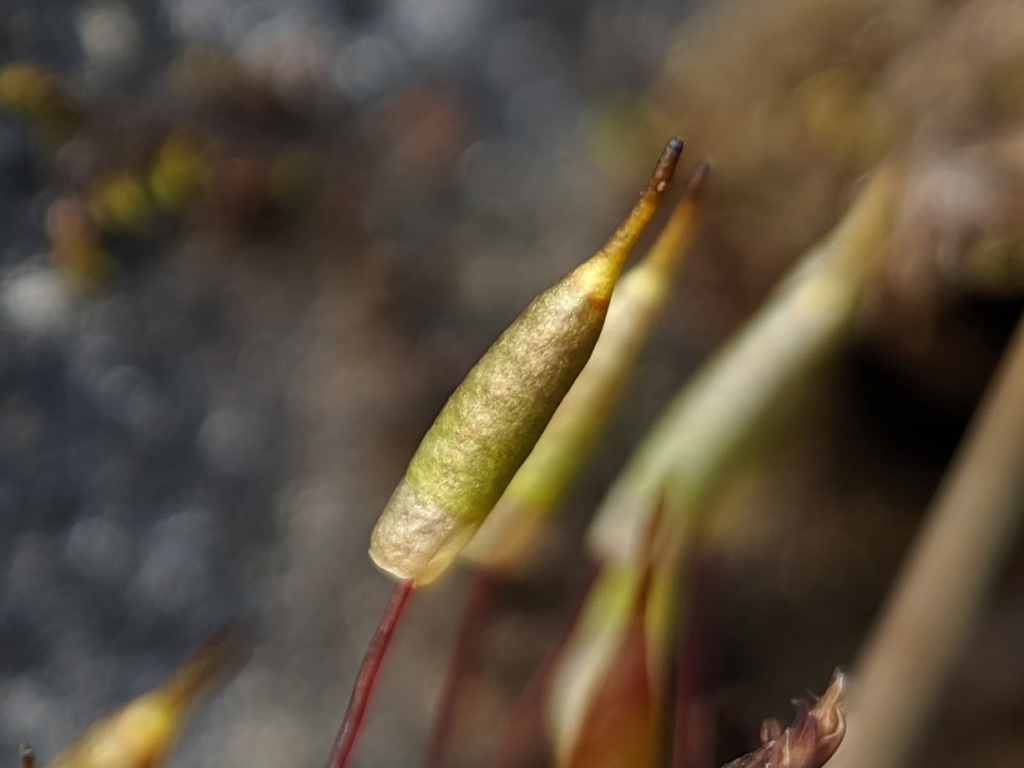Encalypta vulgaris
Hedw.- Sp. Musc. Frond.*: 60 (1801)
Asexual propagules absent. Tufts on soil or rocks. Stems 5–10 (–20) mm long, with sparse axillary hairs, orange-brown, central strand small. Leaves oblong to narrowly obovate, 2.2–3.5 (–4) mm long, 0.9–1.2 mm wide, broadly V-shaped, inrolled when dry; costa subpercurrent; apex broad, rounded; margins entire, plane or weakly recurved, with 4–6 rows of more elongate cells forming a weak border near base; laminal cells in apical half rounded-quadrate or short oblong, 11–18 (–21) μm long, (9–) 13–18 (–21) μm wide, with 3–7 papillae; laminal cells near base away from margin oblong to rectangular, 22–80 μm long, 9–18 μm wide, with thickened and pale orange transverse walls and hyaline longitudinal walls. Setae 2–11 mm long, red near base, orange to yellow near capsule, smooth. Calyptra 3–6 mm long, smooth to papillose. Capsules cylindric, 1–4 mm long. Calyptra conic-cylindric. Operculum 0.9–1 (–1.3) mm long. Peristome absent.
VVP, Gold, CVU, GGr, DunT, NIS, HSF, HNF, VAlp. New Zealand, New Guinea, North America, Eurasia, Africa. Also SA, NSW and Tas. Sporadic throughout Victoria except for the north-west in rocky areas of various geology (e.g. sandstone, shale, basalt, limestone) in sclerophyll forest, often near creeks and waterfalls, sometimes at disturbed sites (e.g. roadsides).
The large persistent calyptra elevated on a seta make this species instantly recognisable among the Victorian mosses and not easily confused with other species.
 Spinning
SpinningHorton, D.G. (2012). Australian Mosses Online. 20. Encalyptaceae. http://www.anbg.gov.au/abrs/Mosses_online/Encalyptaceae.pdf.


